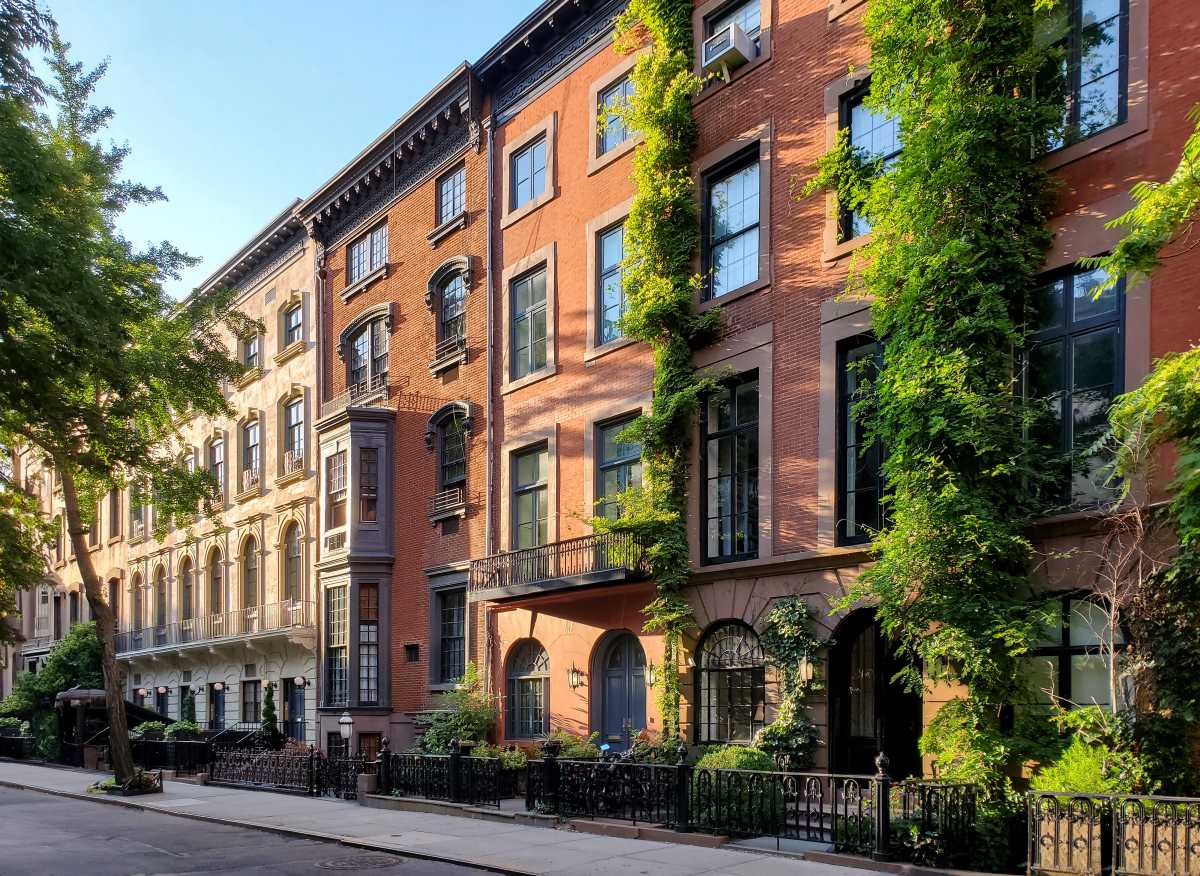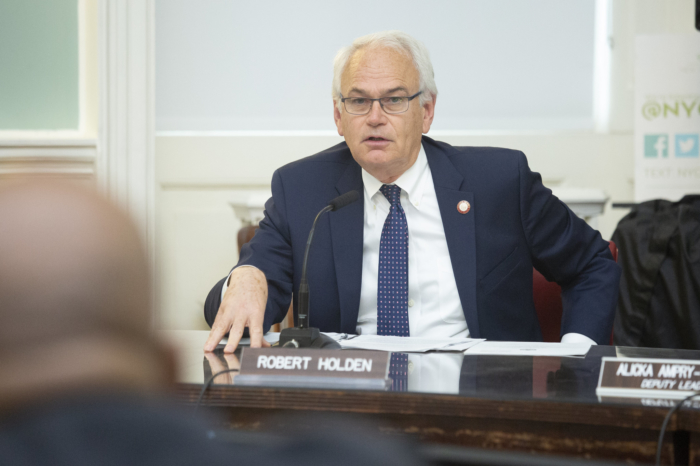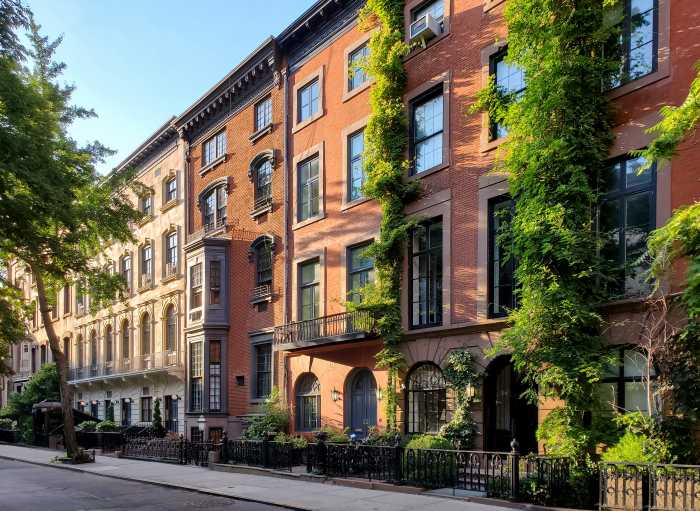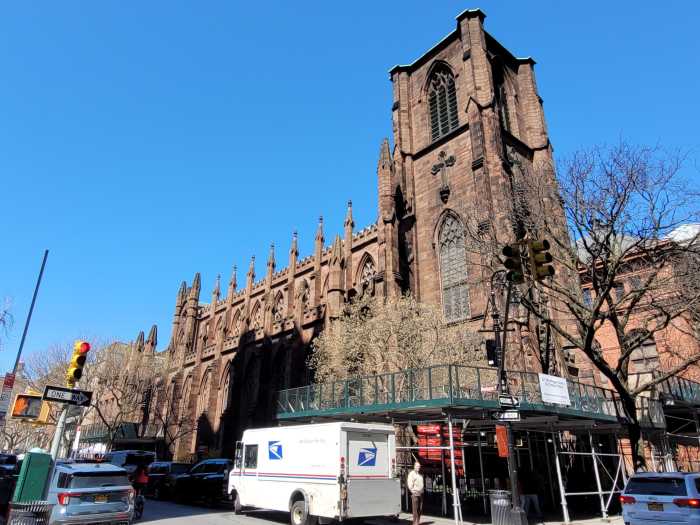-
 Taverna Cyclades
Taverna Cyclades33-07 Ditmars Blvd.
A staple in Astoria Greek community, Kyclades offers seafood and other specialties, with outdoor seating along Ditmars Boulevard.
Thirsty Koala
35-12 Ditmars Blvd.
This cafe serves high-end Australian cuisine made with organic ingredients. Menu items include mini meat pies and grass-fed steaks.
Shawarmania
22-49 31st St.
Located right outside the Ditmars Boulevard subway station, this over-the-counter Middle Eastern spot is known for its halal dishes, shawarma and falafel.
” data-id=”112287374″ data-link=”https://amnewyork.wpengine.com/wp-content/uploads/2019/10/14409_image.jpg” class=”wp-image-1.12287374″/>Photo Credit: Jeff Bachner -
 The Ditty
The Ditty35-05 Ditmars Blvd.
A recent addition to Ditmars that serves cocktails and bar fare every day from 4 p.m. to 4 a.m.
Baroque
19-44 Steinway St.
An elegant night club with signature cocktails and a menu of sushi and other hors d’oeuvres.
Bohemian Hall and Beer Garden
2919 24th Ave.
Considered the oldest beer garden in New York City, this Czech hall has a massive outdoor space with picnic tables and a long list of beers.
” data-id=”112287422″ data-link=”https://amnewyork.wpengine.com/wp-content/uploads/2019/10/14411_image.jpg” class=”wp-image-1.12287422″/>Photo Credit: Jeff Bachner -
 Manavi Market
Manavi Market23-38 31st St.
A supermarket known for its gourmet and locally-sourced ingredients.
Mediterranean Foods
30-12 34th St. and 22-78 35th St.
A family-owned Greek specialty store that’s been selling cheeses, olive oils and pastries since 1974.
Ditmars Thrift Shop
31-20 Ditmars Blvd.
This classic New York City thrift shop is the perfect spot to go digging for treasures at great prices.
718-545-2529
” data-id=”112287426″ data-link=”https://amnewyork.wpengine.com/wp-content/uploads/2019/10/14413_image.jpg” class=”wp-image-1.12287426″/>Photo Credit: Jeff Bachner -
 Astoria Park
Astoria ParkAstoria Park South to Ditmars Boulevard, between Shore Boulevard and 19th Street
Head to the park for its scenic views, sprawling lawn and playground. In the summer, the public pool offers a spot to cool off and the park hosts events such as live music and movie screenings.
Q.E.D.
27-16 23rd Ave.
During the day, this studio offers rehearsal space for artists along with creative classes and workshops. At night, it hosts events like comedy shows and poetry slams.
Astoria Bowl
19-45 49th St.
This neighborhood bowling spot offers 28 lanes, an arcade and a sports bar, and displays laser lights on its “Cosmic Bowling Nights.”
” data-id=”112283088″ data-link=”https://amnewyork.wpengine.com/wp-content/uploads/2019/10/14415_image.jpg” class=”wp-image-1.12283088″/>Photo Credit: Jeff Bachner -
 Trains:
Trains:N and Q to Astoria-Ditmars Boulevard, Astoria Boulevard
Buses:
Q19, Q47, Q69, Q70, Q100, Q101, M60
” data-id=”112283089″ data-link=”https://amnewyork.wpengine.com/wp-content/uploads/2019/10/14418_image.jpg” class=”wp-image-1.12283089″/>Photo Credit: Jeff Bachner -
 The original 56-acre parcel of land for Astoria Park was acquired by the city in October 1913 and was first named William J. Gaynor Park, after the mayor who held office from 1910-1913, before being named Astoria Park that December, according to the Parks Department. The park was eventually expanded to 60 acres. The 330-foot pool opened in the summer of 1936, and is the oldest and largest public pool in the five boroughs. The pool was used to host the swimming and diving trials for the U.S. Olympic teams in 1936 and 1964.
” data-id=”112283091″ data-link=”https://amnewyork.wpengine.com/wp-content/uploads/2019/10/14420_image.jpg” class=”wp-image-1.12283091″/>
The original 56-acre parcel of land for Astoria Park was acquired by the city in October 1913 and was first named William J. Gaynor Park, after the mayor who held office from 1910-1913, before being named Astoria Park that December, according to the Parks Department. The park was eventually expanded to 60 acres. The 330-foot pool opened in the summer of 1936, and is the oldest and largest public pool in the five boroughs. The pool was used to host the swimming and diving trials for the U.S. Olympic teams in 1936 and 1964.
” data-id=”112283091″ data-link=”https://amnewyork.wpengine.com/wp-content/uploads/2019/10/14420_image.jpg” class=”wp-image-1.12283091″/>Photo Credit: Jeff Bachner -
 Median sales price: $620,000
Median sales price: $620,000
Number of units on market: 258
Median rental price: $2,200
Number of rentals on market: 5,548
(Source: StreetEasy)
” data-id=”112287456″ data-link=”https://amnewyork.wpengine.com/wp-content/uploads/2019/10/14422_image.jpg” class=”wp-image-1.12287456″/>
Photo Credit: Jeff Bachner -
 Astoria Park is slated to receive some TLC from the city.
Astoria Park is slated to receive some TLC from the city.It will receive $30 million in funding for capital improvements, Mayor Bill de Blasio announced on Aug. 18, as part of a $150 million investment in five “anchor parks” around the city — one from each borough.
The funding will come from the mayor’s Fiscal 2017 Executive Capital Commitment Plan, and the upgrades will be managed by the Parks Department.
Locals said Astoria Park is in dire need of a monetary boost.
“We’re going to be doing some really great things there,” Councilman Costa Constantinides said. “It’s the largest capital investment that we’ve seen in this park in over 30 years.”
Constantinides said he would like the park to get a FIFA-regulated soccer field, and updates to its public pool and playground.
“We’re ecstatic. Astoria Park is the jewel of our community,” said Florence Koulouris, district manager of Community Board 1. “Our parks are our backyard, so having this money and making improvements to the park is going to give our residents a real shot in the arm.”
A representative from the Parks Department said community outreach for feedback on how the money should be spent will begin this fall.
” data-id=”112283092″ data-link=”https://amnewyork.wpengine.com/wp-content/uploads/2019/10/14425_image.jpg” class=”wp-image-1.12283092″/>Photo Credit: Jeff Bachner
Newcomers are coming to the northern half of Astoria for its close proximity to Manhattan, sprawling riverfront park and plethora of ethnic restaurants, and are driving up the area’s real estate prices.
But, according to residents, the tight-knit residential community makes them want to stay.
“I’ve been here 12 years now from upstate, and it’s just the neighborhood feel” that makes the area special, said middle-school teacher Mike Mehan, 34, while sitting in front of his house near Ditmars Boulevard. “I know at least a dozen of the neighbors around this street right here.”
New residents are mostly young people attracted to the sidewalk cafes and bars along Ditmars Boulevard and 31st Street, in addition to having the 60-acre Astoria Park as their backyard.
With tennis courts, a track and the Charybdis Playground, the park is perfect for the many young families who live in the area. And its position along the East River provides scenic views of Manhattan, the Hell Gate Bridge and the Robert F. Kennedy Bridge.
It is also home to Astoria Pool, the oldest and largest public pool in New York City.
Jay Patel, a 27-year-old banker, moved to north Astoria six months ago and although he found housing prices to be a bit expensive, he decided to stay because of the park.
“It’s calm, it’s quiet,” he said, sitting on a bench in the park. “I wouldn’t mind paying a bit extra just for this.”
Mike Schulte, a real estate agent with Citi Habitats, added that commuters like the neighborhood because they can get to midtown in 20 minutes on the N or Q train from Ditmars and Astoria boulevards.
In terms of local housing stock, the area’s zoning laws keep building heights a maximum of 40 feet, with a few sections reaching 60 feet, so it is comprised mostly of one-, two- and three-family homes with a handful of bigger complexes like the Acropolis co-op on 33rd Street, which has more than 600 apartments, sprinkled around.
This sets north Astoria apart from the southern section, which is seeing new developments spread in from Long Island City, and makes it feel more residential, Schulte noted.
“It’s a very eclectic, warm neighborhood. That’s because of the fact that there’s not tons of apartment buildings,” he said. “Your population density is a lot less, so you’re more likely to know Jane down the block.”
But while north Astoria is less expensive to buy or rent in than Manhattan, it is one of the priciest parts of Queens.
The median asking rent in 2015 was $2,200 in north Astoria, compared to $2,100 in the rest of Queens and $3,200 in Manhattan, according to data from StreetEasy. The median sales price in north Astoria for 2015 was $620,000 compared to $420,000 for Queens as a whole and $990,000 for Manhattan, the listings site found.
And prices here continue to rise, particularly in the sales market. According to StreetEasy, the median sales price in north Astoria rose from $500,000 in 2012 to $750,000 so far in 2016 as of Aug. 17.
Walk down Ditmars Boulevard and you’ll see the amenities residents are willing to pay for.
The strip is flushed with eateries with outdoor seating for the warm months, like at the Mediterranean restaurant Tru Astoria at 35-19 Ditmars Blvd. and Martha’s Country Bakery at 36-21 Ditmars Blvd.
Councilman Costa Constantinidis said the local businesses serve as unofficial meeting spots for area residents.
“You go to Othello’s Deli [at 26-19 24th Ave.], there’s people just standing outside the deli. At the sidewalk cafes, people at other local businesses, just speaking with one another, hanging out and enjoying the day,” he said. “It’s a neighborhood that’s coming to life and it’s a great thing.”
Culturally, north Astoria is still very diverse. It was historically a Greek neighborhood, though pockets of Italian, Puerto Rican, Brazilian and other immigrants also thrive, in addition to its growing population of young people.
The area is still known for its Greek food, however, and locals and visitors alike flock to spots like Agnati at 19-06 Ditmars Blvd., which offers a view of Astoria Park, and Elias Corner for Fish at 24-02 31st St.
“We have over a hundred languages spoken in our community,” said Florence Koulouris, district Manager of Queens Community Board 1. “You can dine in Astoria for a month, never eat in the same place twice and have every ethnic background you can imagine.”
And the number of options is always growing with trendy new bars and eateries frequently opening, like The Last Word at 31-30 Ditmars Blvd., which opened in mid-August.
The storefront of this new speakeasy is disguised as a hardware store, but it secretly boasts a candlelit 1920s-themed venue with craft cocktails.
There is also the Pomeroy at 36-12 Ditmars, a bar and restaurant that opened in Oct. 2015 and boasts high-end comfort food. The eatery made headlines when Lady Gaga attended its opening. The chef, Bo O’Connor, is Gaga’s childhood friend and was formerly her private chef.
These new places reflect the new, younger Astoria, according to locals like Ashley Easteadt, 32, a mother of two who works in advertising and has lived near Ditmars since 2008.
“You can walk everywhere and there’s always something new opening,” she said.
Find it:
North Astoria is bound to the south by Hoyt Avenue east of 31st Street and Astoria Boulevard north of it, and to the north by 20th Avenue and, north of Steinway Street, Berrian Boulevard. It sits between Shore Boulevard (at the East River) to the west and 81st Street to the east.





























